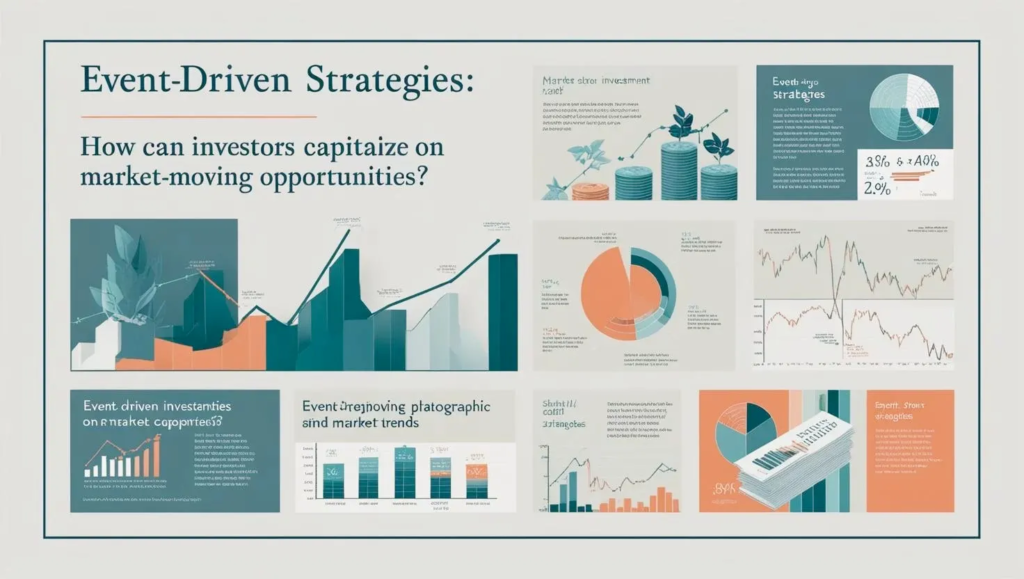Stock trading is an activity that involves many factors that can affect the share price of a company. One important element that can influence stock price movements is stock catalysts.
These catalysts are triggers that can accelerate changes in stock prices in a short period of time. In this article, we will provide a complete guide to catalysts for stock trading, from their definition to the strategies that can be used.
Article Summary:
📊 Stock Catalysts: Catalysts in stock trading are factors or events that can affect the movement of stock prices, either in the short or long term. Examples include company financial reports, macroeconomic changes, and government policies.
🔑 Types of Influential Catalysts: Catalysts can be macroeconomic (such as inflation or interest rates), earnings plays, or changes in corporate strategy such as mergers or acquisitions. Event-driven trading can also be used to capitalize on specific events that affect stock prices.
📈 Combining Catalysts with Technical Analysis: In stock trading, it is very important to combine fundamental catalysts with technical analysis, such as using RSI, volume, and gap indicators to determine the right time to buy or sell stocks.
💼 Risk of Catalyst-based Trading: While it can be profitable, catalyst-based trading also carries the risk of high volatility, especially when market reactions occur quickly after the announcement of a catalyst.
🔧 Strategy and Catalyst Calendars: Utilizing catalyst calendars, such as economic reports and interest rate decisions, can provide an advantage in event-driven trading and help investors make more informed and strategic decisions.
🌐 Application of Catalysts in Sectors: Different catalysts affect different sectors. For example, banking is heavily influenced by interest rate decisions, while technology is more influenced by product innovation and market changes.
What is a Stock Catalyst?
Stock catalysts are factors or events that can significantly influence the movement of stock prices in the short or long term. Typically, these catalysts influence investors’ decisions to buy or sell stocks. Some examples of catalysts that can affect stock prices include earnings announcements, macroeconomic changes, mergers or acquisitions, or government policy announcements.
Types of Catalysts that are Most Influential in Stock Trading
There are different types of catalysts that can affect stock prices, and here are some of the most influential ones in stock trading:
1. Macroeconomic Catalysts

Macroeconomic events or indicators, such as GDP, unemployment rate and inflation, can have a major impact on stock market movements. For example, CPI(Consumer Price Index) and PMI(Purchasing Managers’ Index) often trigger significant market reactions.
2. Earnings Play
Earnings play refers to trading stocks based on the company’s financial reports that are about to be released. Many traders utilize earnings trading to predict stock price movements after earnings results are announced.
3. Event-Driven Strategy: Before and After the Event
In event-driven trading, investors will buy stocks before a major event (such as a merger or earnings announcement) and sell them after the event. This involves careful strategy and in-depth analysis of the event ‘s impact on the stock price.
4. Event-Driven Strategy Based on Earnings

Knowing how stock prices behave before and after earnings releases is very important. For example, if a company is predicted to report better-than-expected earnings, its stock may experience a surge in price. However, earnings surprises (results that are better or worse than expectations) can be a big catalyst in stock price movements.
Building a Stock Catalyst Calendar

To effectively utilize stock catalysts, investors need to compile a weekly catalyst calendar. In Indonesia, for example, investors can follow corporate earnings announcements or important economic decisions such as Bank Indonesia interest rates. In the US, earnings season and FOMC meetings are two big catalysts to follow.
Fundamental Catalyst vs Technical Catalyst
Fundamental catalysts refer to factors that affect the intrinsic value of a company, such as financial reports or changes in government policy. Technical catalysts, on the other hand, focus more on the price movements of the stock itself and the chart patterns that can provide trading signals.
Combining Catalysts with Technical Analysis

Utilizing catalysts in stock trading is not only based on fundamental information, but should also be supported by technical analysis. Some technical indicators that can be used to confirm stock catalysts are trading volume, RSI (Relative Strength Index), and gap price. When there is a strong catalyst driving the stock price, these technical indicators can help to identify the best time to enter or exit a position.
Sector-specific Catalysts: Examples in the Banking and Technology Sectors
- Banking Catalysts in the banking sector are often related to changes in interest rates decided by central banks, such as the FOMC (Federal Open Market Committee). These catalysts are particularly important for interest rate-sensitive sectors, such as banks and other financial institutions.
- Technology In the technology sector, new product innovations or major partnership announcements are often major catalysts. For example, the launch of a new technology or software update can affect the share price of a tech company, as it did for Apple (AAPL) or Tesla (TSLA) shares.
- Biotechnology In the biotechnology sector, announcements about clinical trial results or regulatory approvals from regulatory bodies such as the FDA can be a big catalyst, which can push a company’s share price to higher levels.
Manage Risk Management

In catalyst-based trading, it is important to understand that not all catalysts have a direct impact on stock prices. In fact, important data releases such as inflation reports or FOMC meeting results can lead to risky high volatility if not managed properly. Therefore, setting disciplined profit targets and stop losses is a fundamental step that should not be overlooked.
Avoid an all in approach even if the catalyst seems very promising. Markets are often irrational, and price movements can go in the opposite direction of analyst expectations or market consensus. By limiting the amount of capital per position and anticipating failed catalyst scenarios, traders can protect their portfolios from unnecessarily large losses.
Pay Attention to Company Health
Before reacting to catalysts such as earnings releases or strategic acquisitions, it is essential to evaluate a company’s fundamental condition. Assess the consistency of revenue growth on a quarter-over-quarter basis, especially for technology stocks that are often targeted in event-driven trading. A positive earnings report without corresponding top-line growth or positive cash flow may trigger a negative market reaction.
Beyond revenue, analyzing financial health indicators like operating cash flow and profit margins is also critical to determine the sustainability of the catalyst. If catalysts such as market expansion or new product launches align with strong financials, the likelihood of a successful trade increases. A combination of strong catalysts and solid fundamentals can enhance confidence in taking positions—always within the framework of disciplined risk management.
How to Buy Tokenized US Stocks on the Pintu App

The Pintu app now features Pintu tokenized US stocks investment, allowing local investors to buy global tech stocks such as Apple (AAPLX), Tesla (TSLAX), or NVIDIA (NVDAX) in the form of crypto tokens. These tokens represent fractional ownership of the actual shares, and can be transacted 24/7 on the blockchain.
To purchase, users simply need to download the Pintu app, complete KYC verification, and deposit funds in Rupiah. After that, open the menu to select the desired stock, and make a direct purchase in the form of crypto assets. The price follows the real-time stock market value and can be monitored through the app.
Conclusion
Catalysts for stock trading play an important role in determining the direction of stock price movement. Understanding stock catalysts and how to use them in your trading strategy will pay huge dividends.
It is important to combine these catalysts with technical analysis and appropriate strategies to maximize opportunities. Don’t forget to keep an eye on the stock catalyst calendar and stay abreast of market developments to make informed decisions in stock trading.
Reference:
- David Russell.“Why Do Stocks Move? Learn 7 Catalysts That Drive Price Action in the Market.” Accessed November 13, 2025
